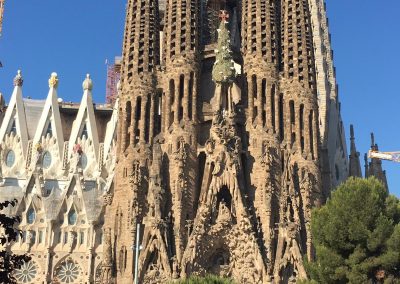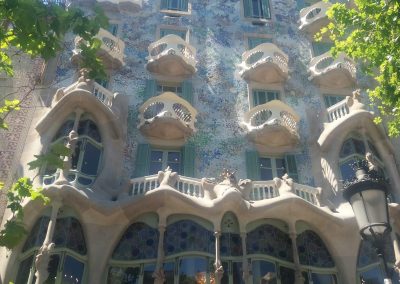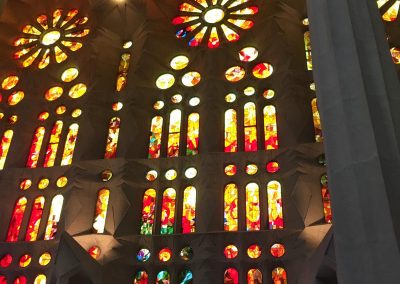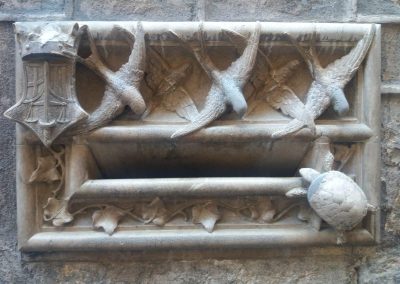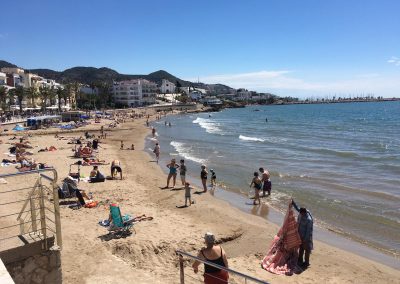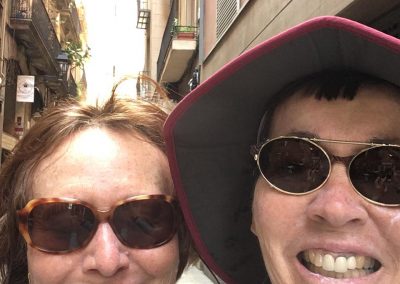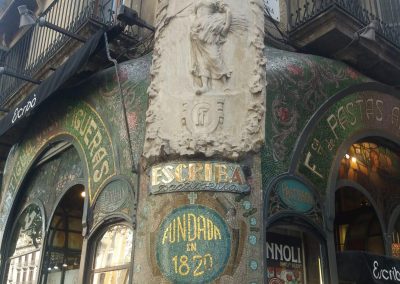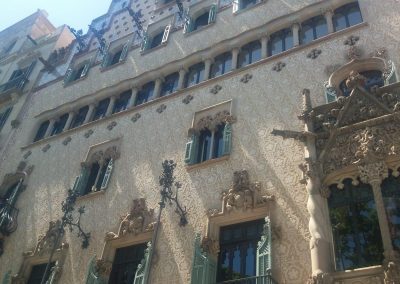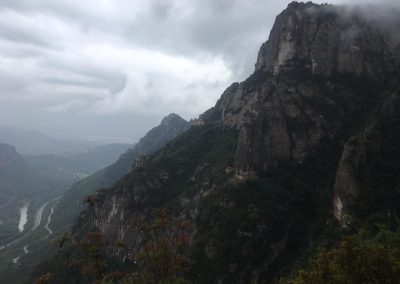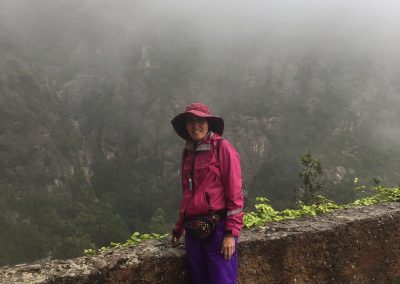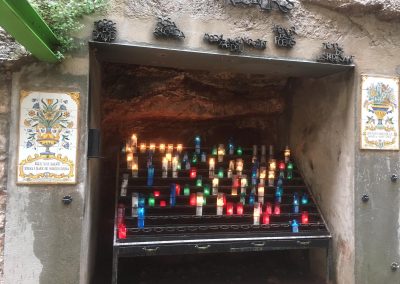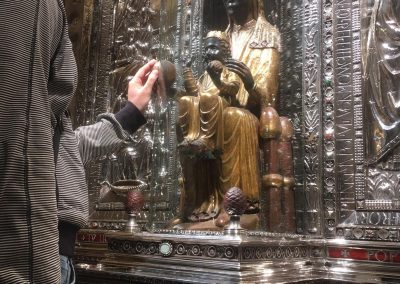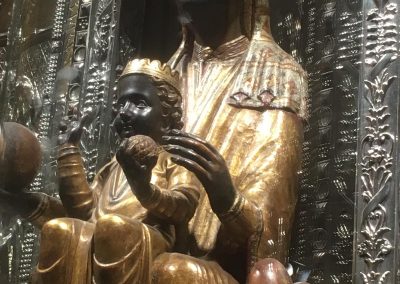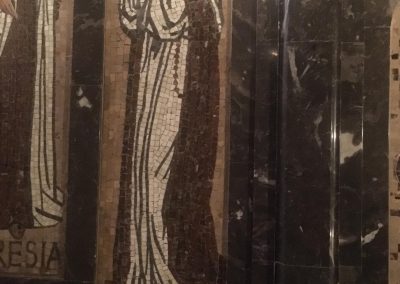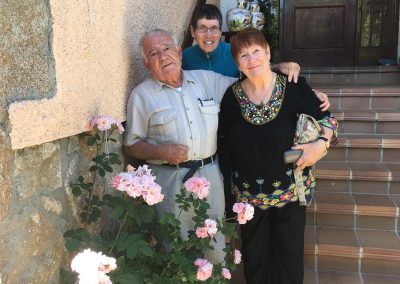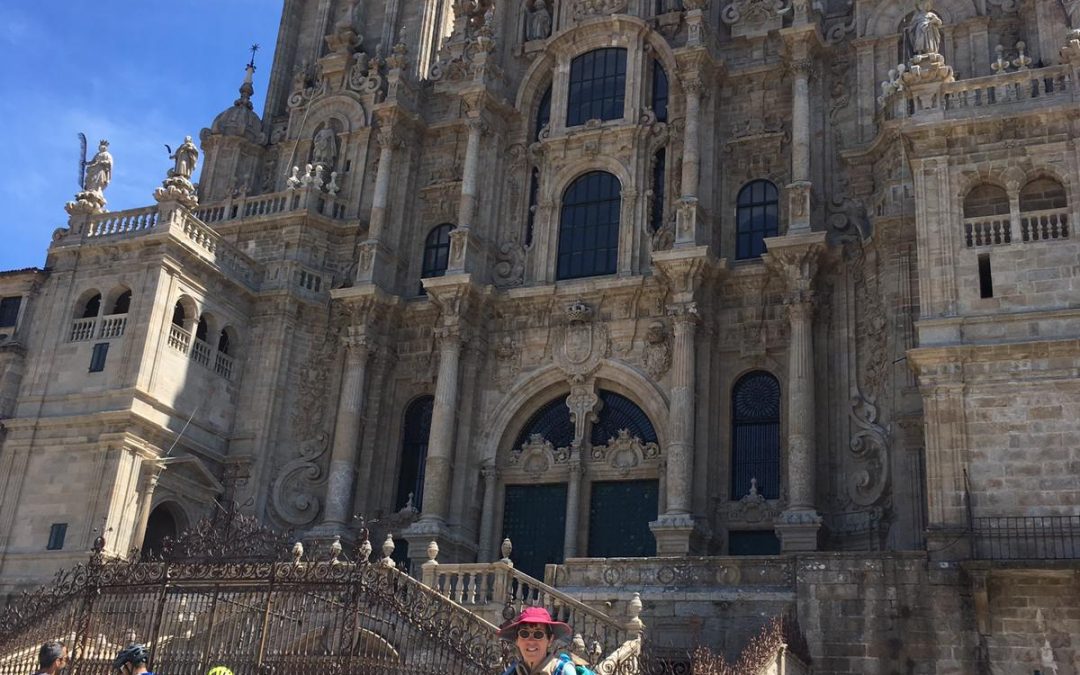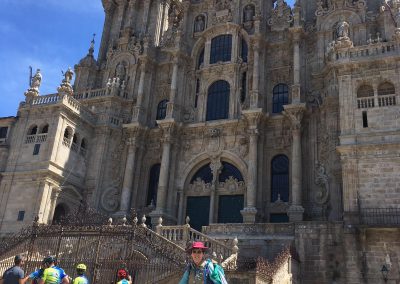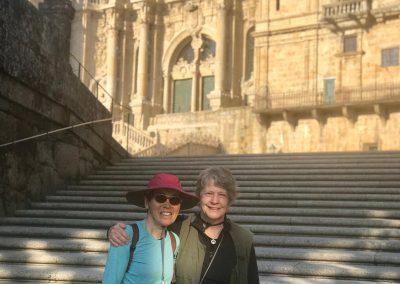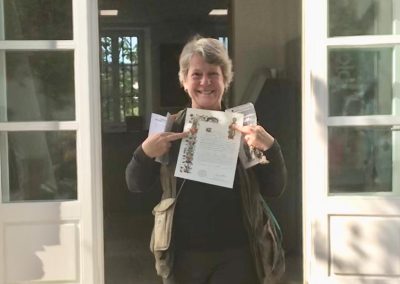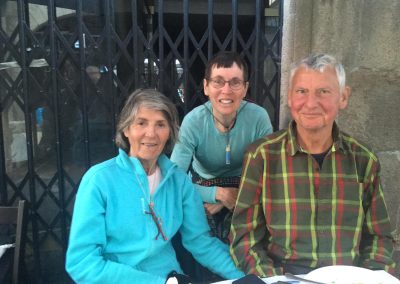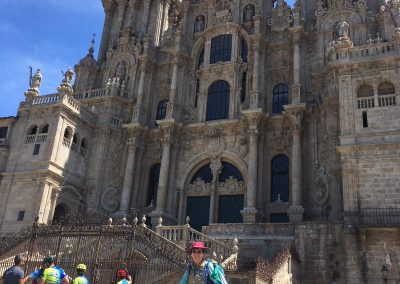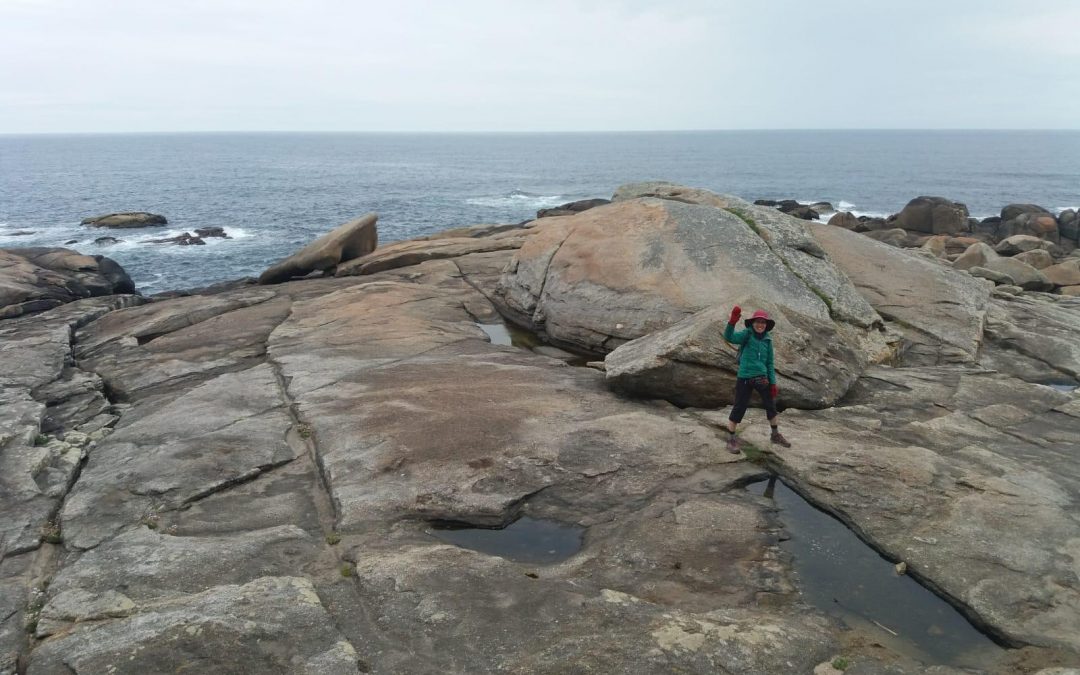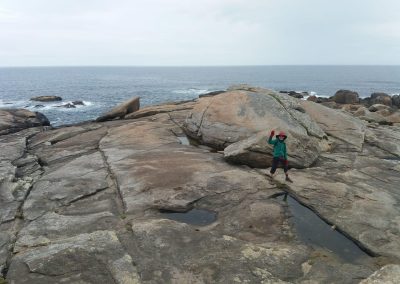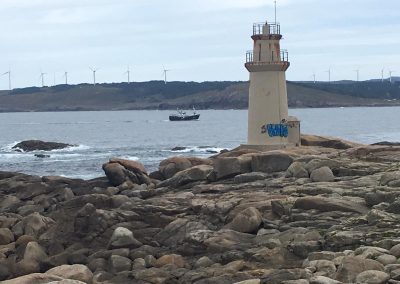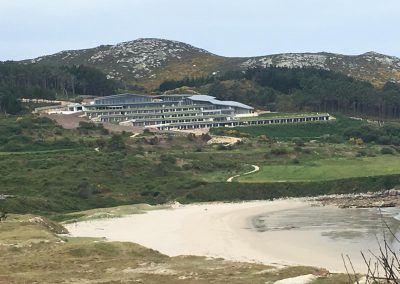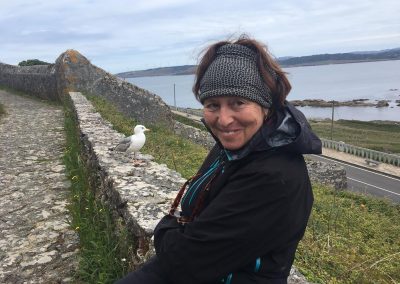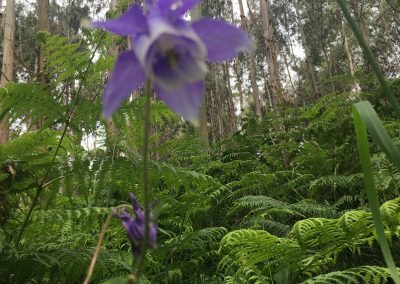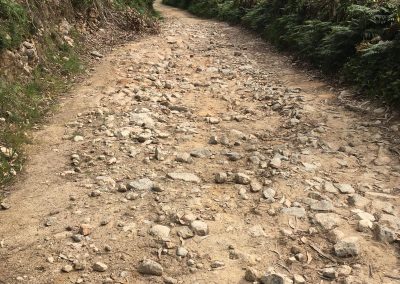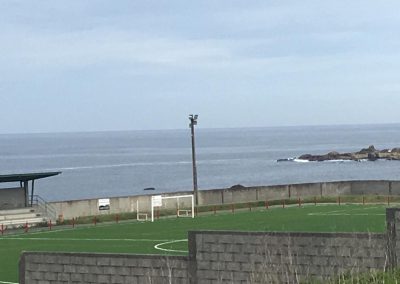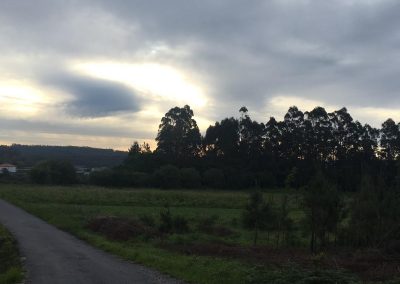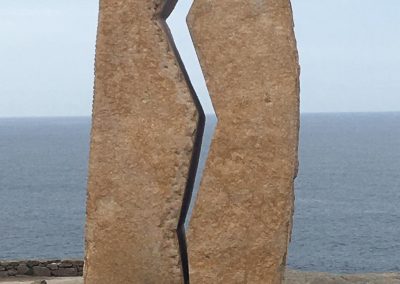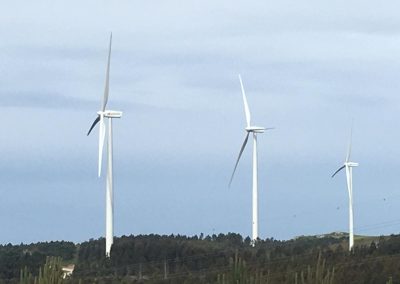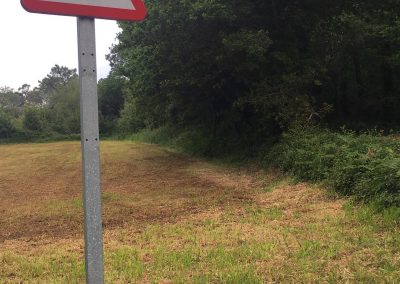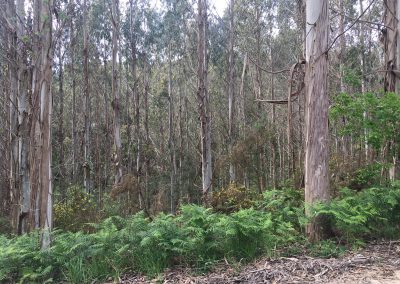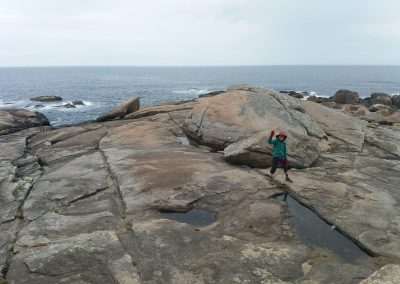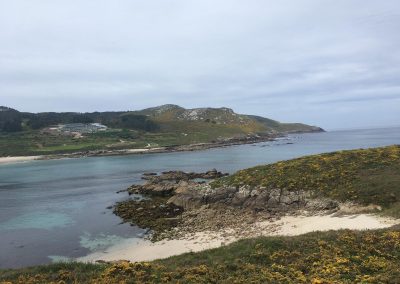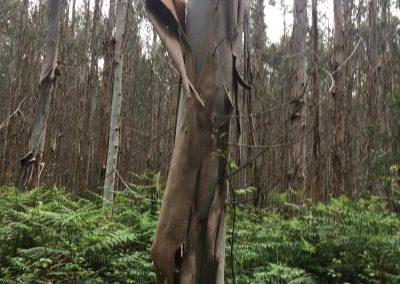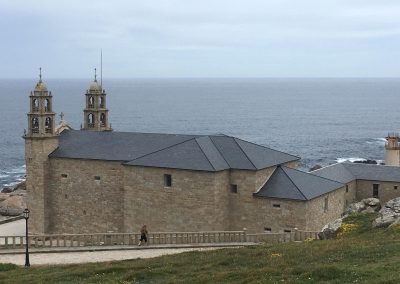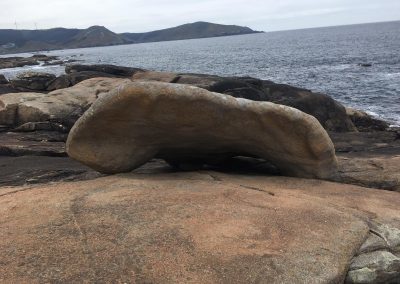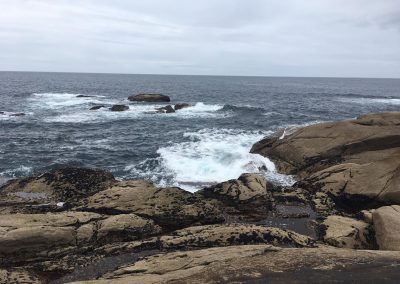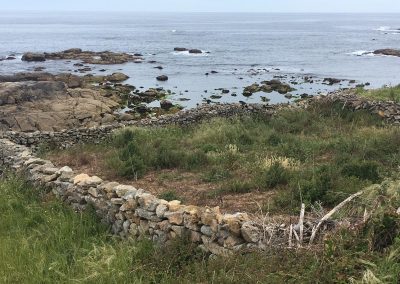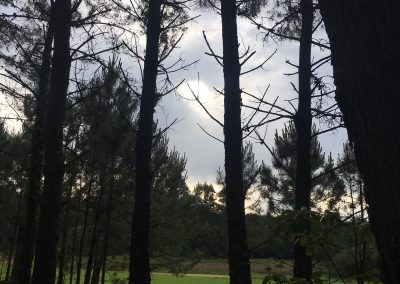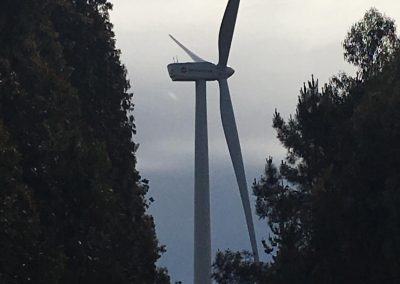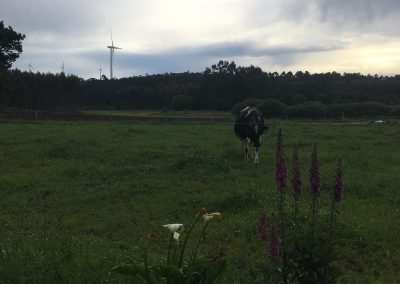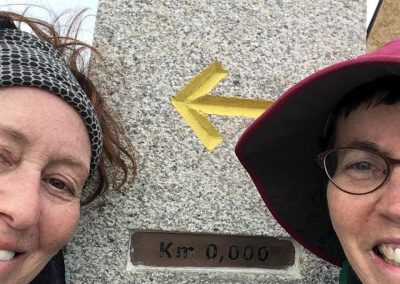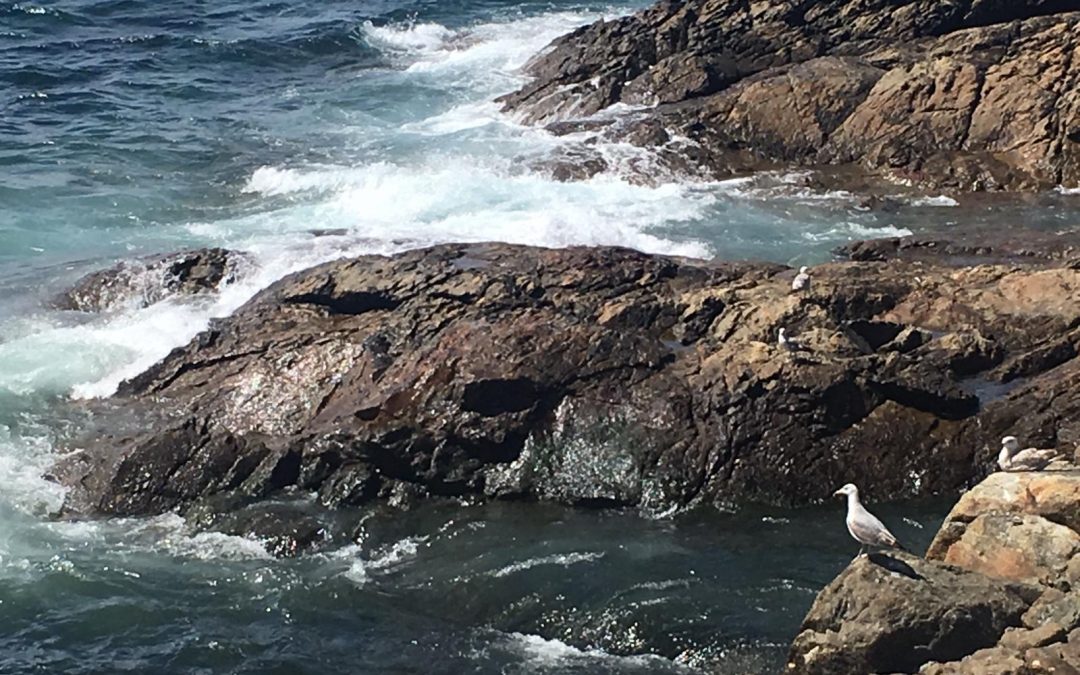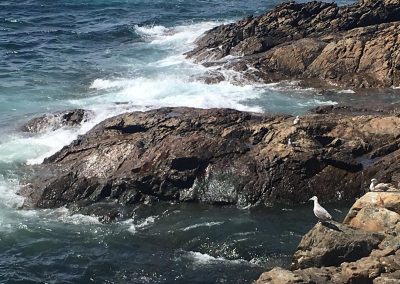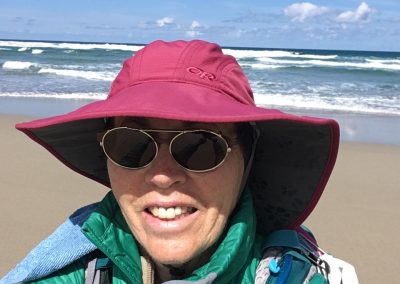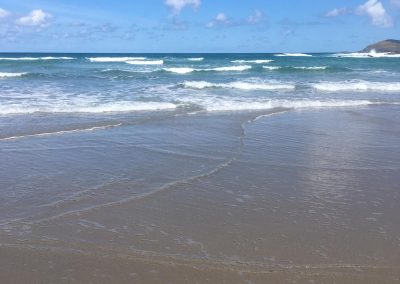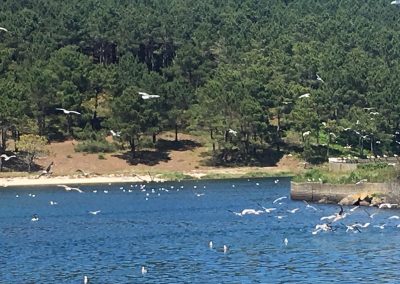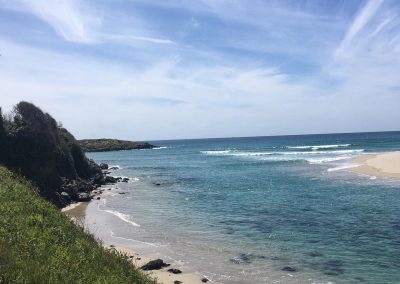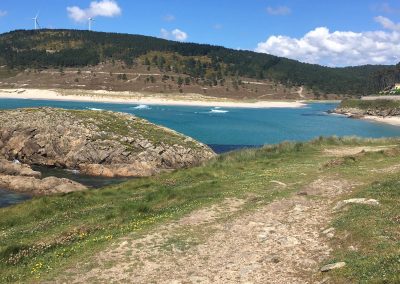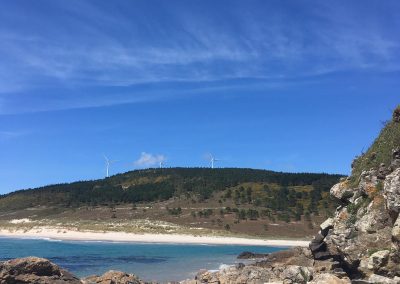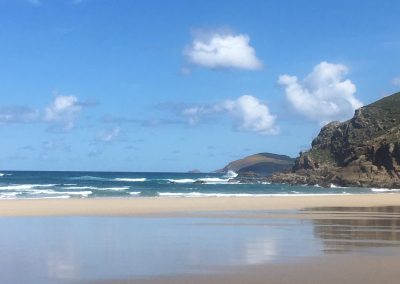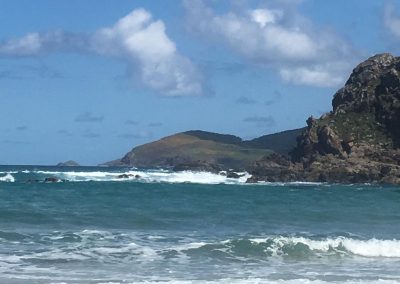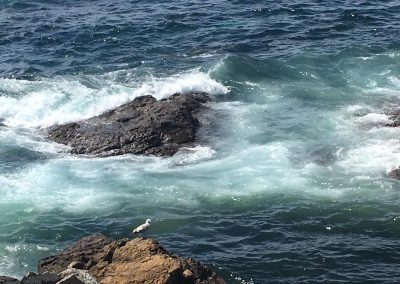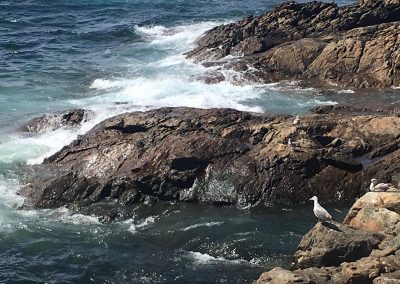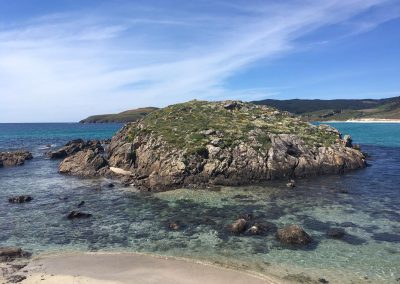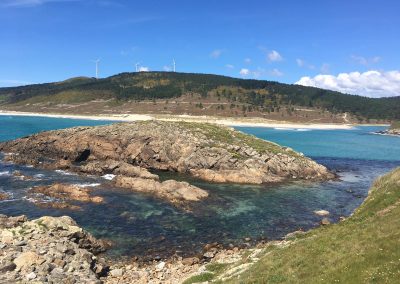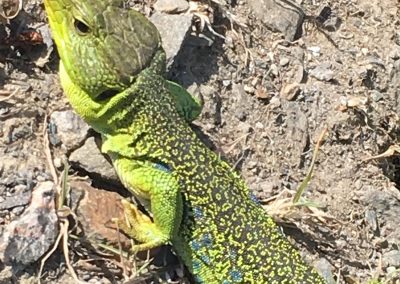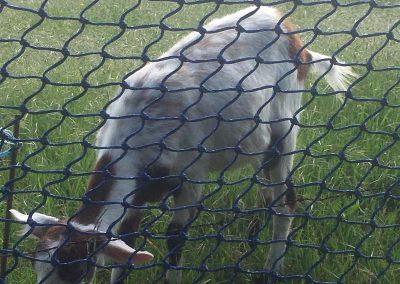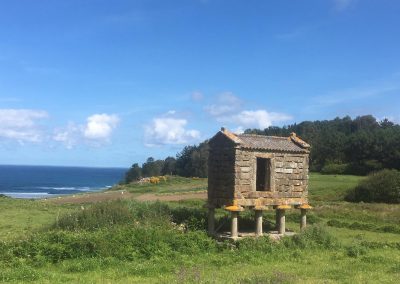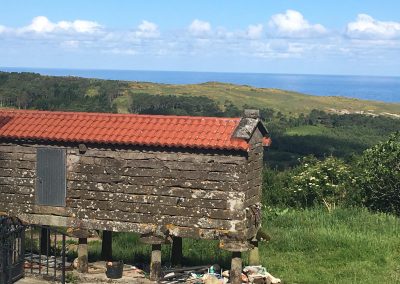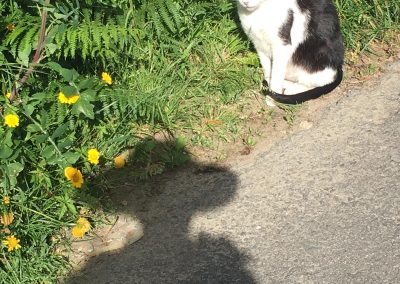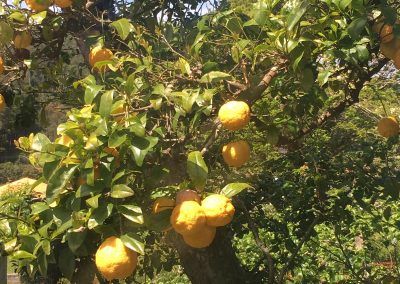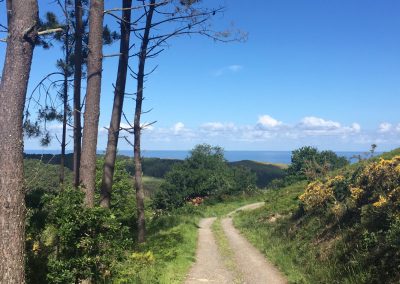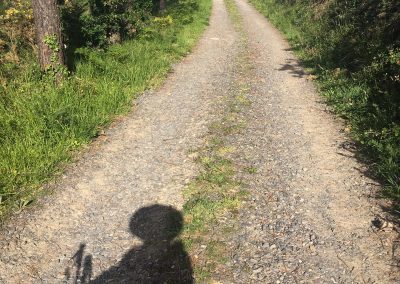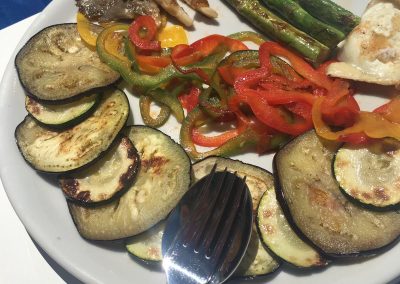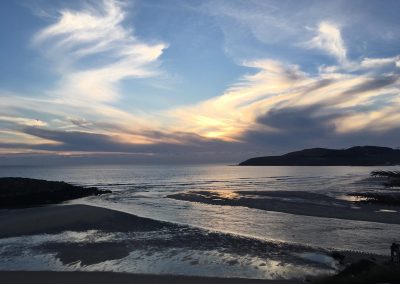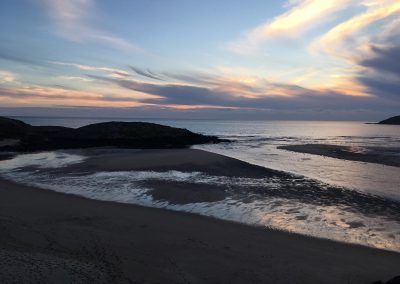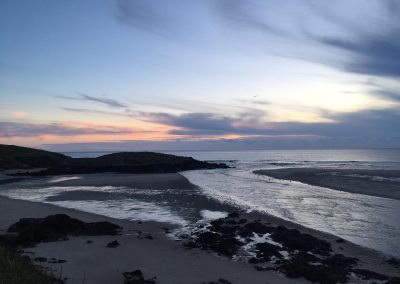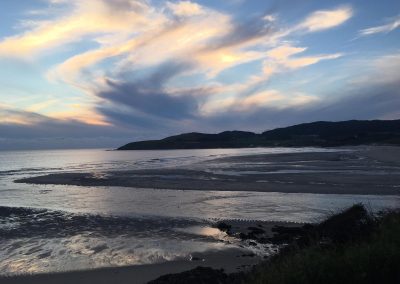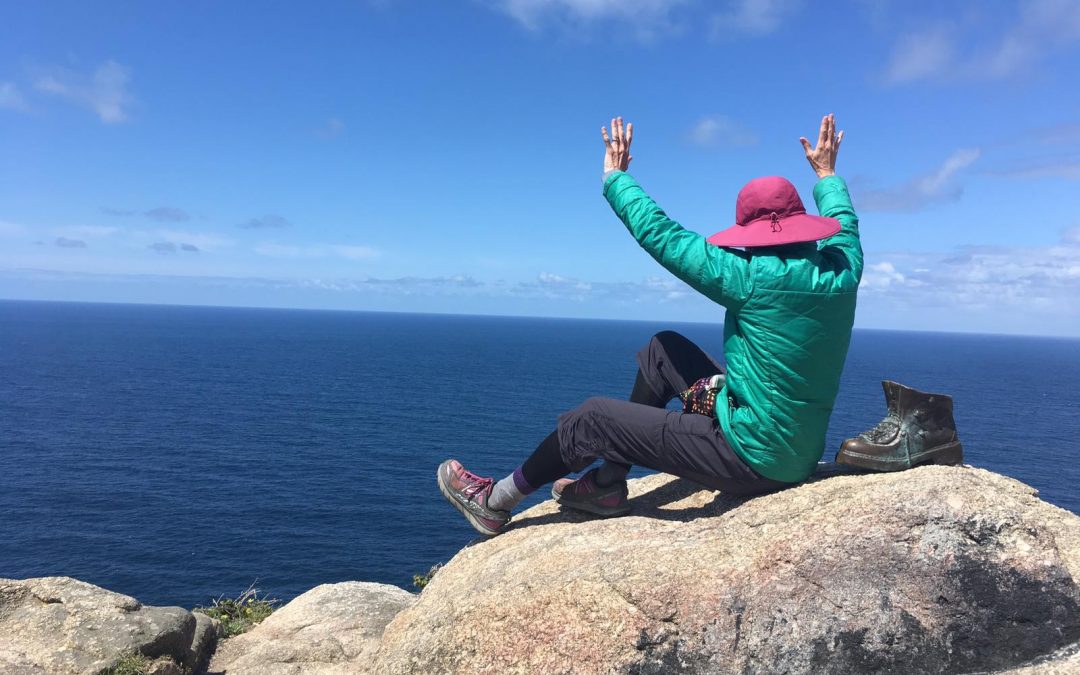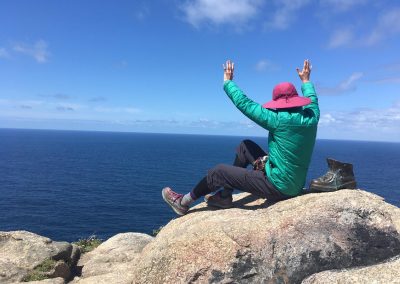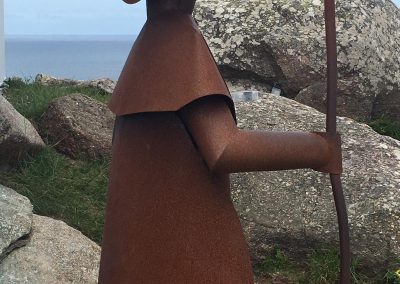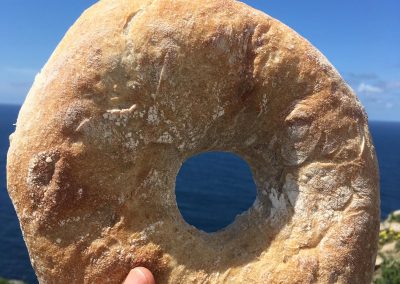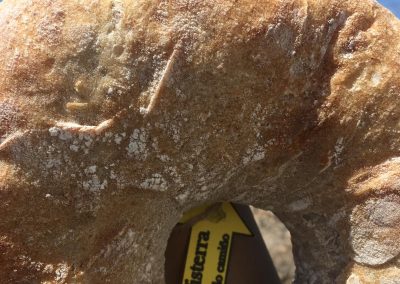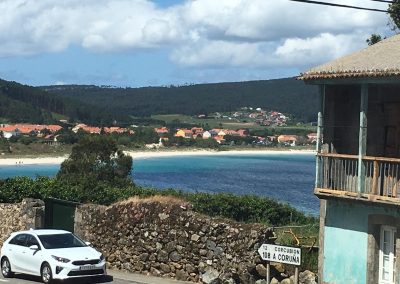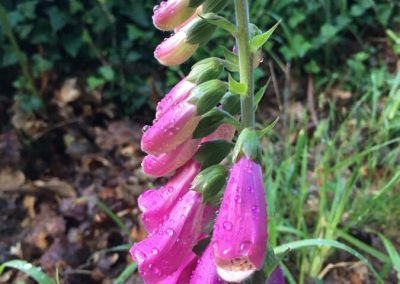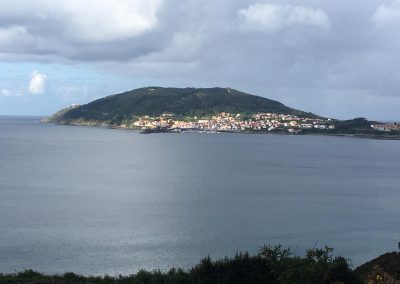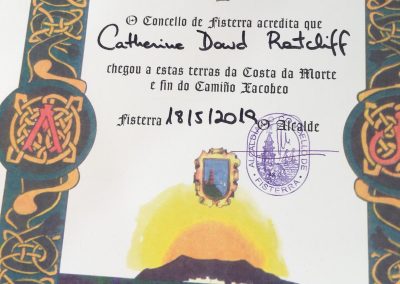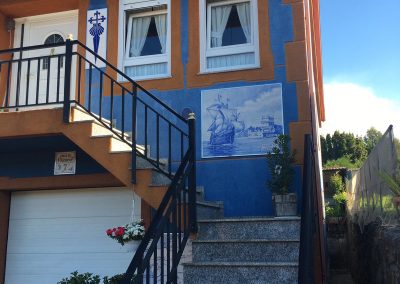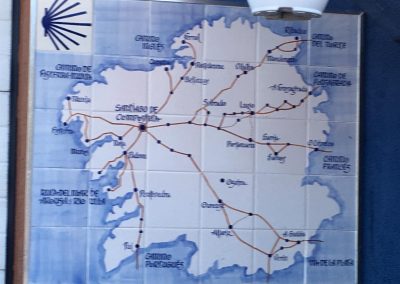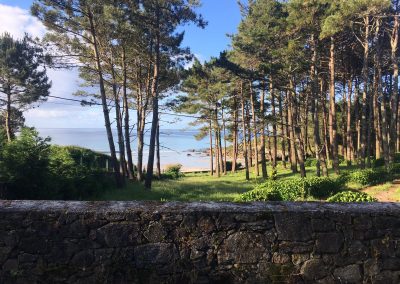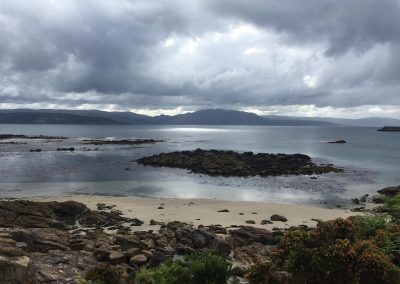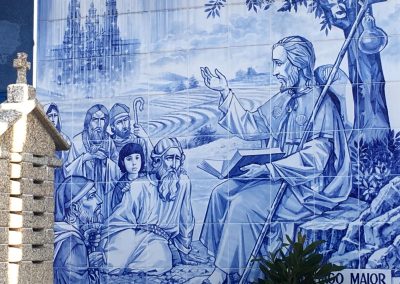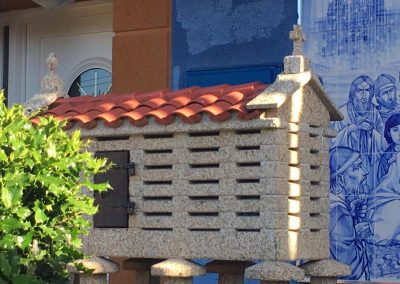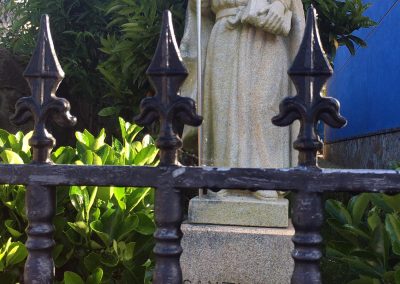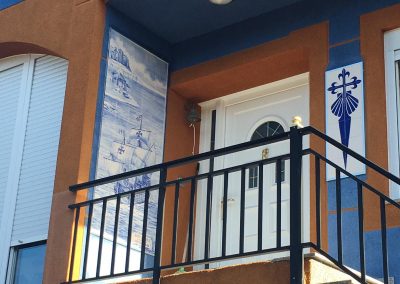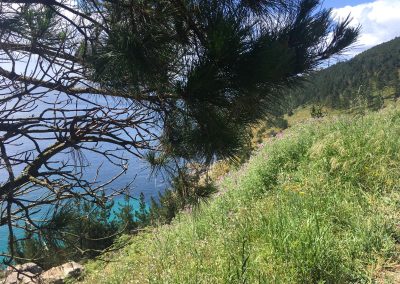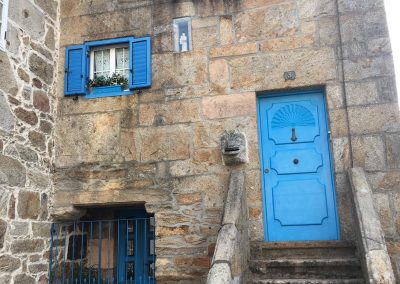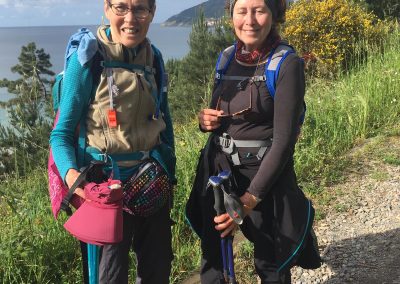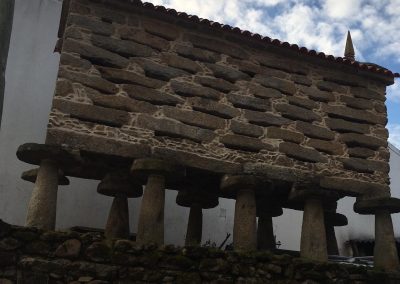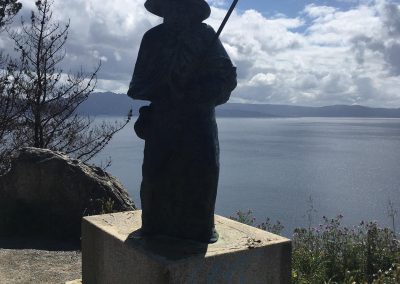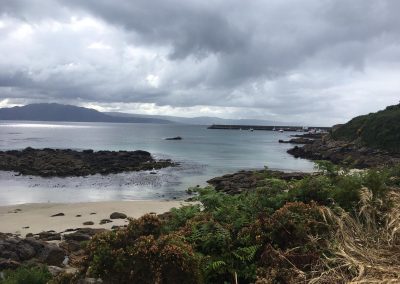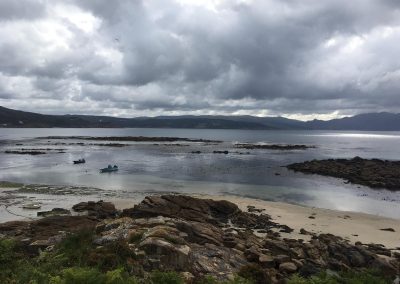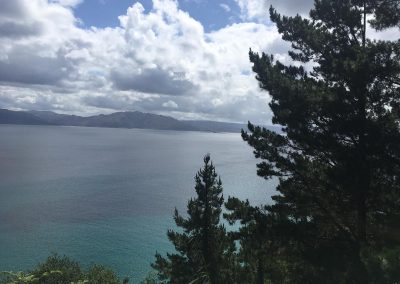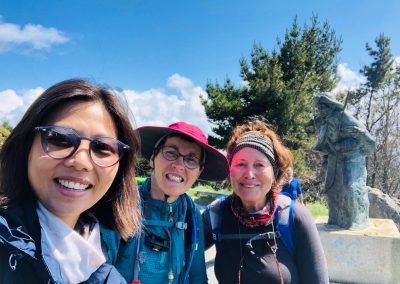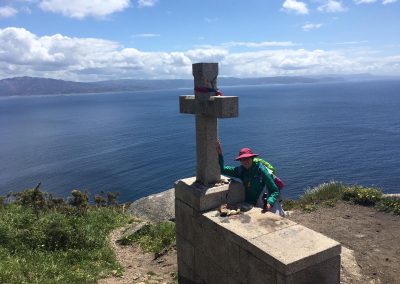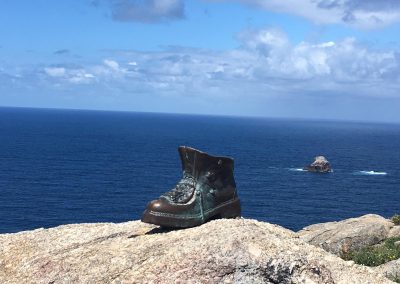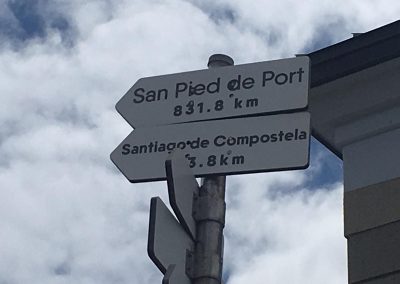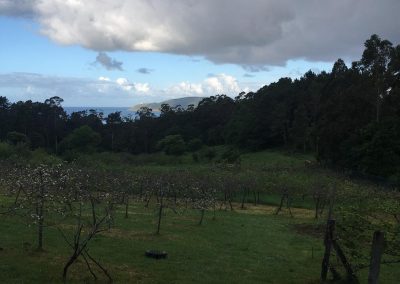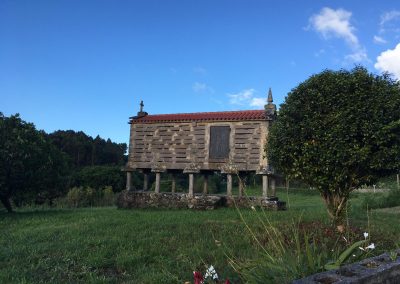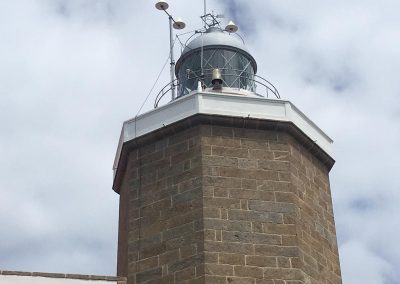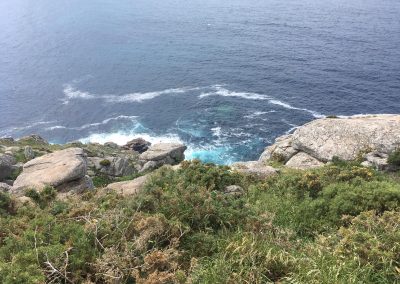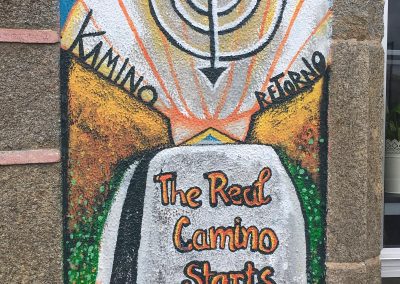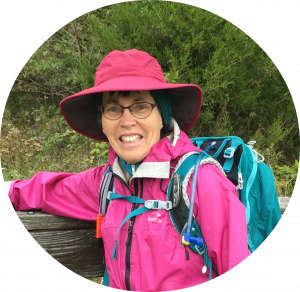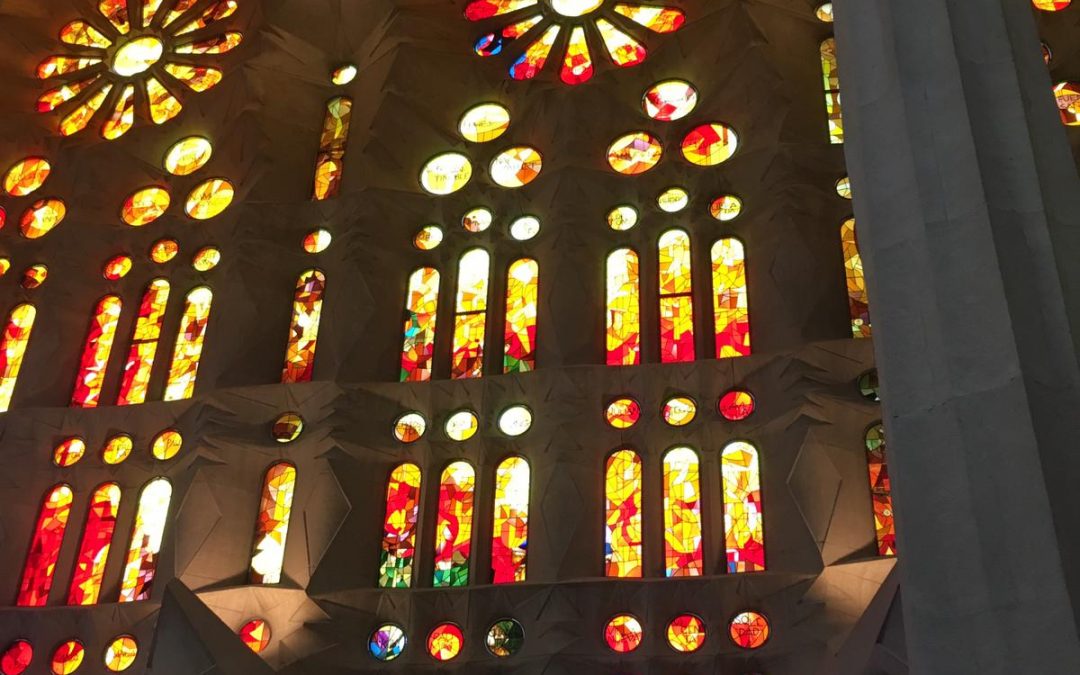
Good-bye Atlantic Ocean, hello Mar Mediterráneo!
Wednesday, May 22-Sunday, May 26: Post-camino days in Barcelona, Sitges, and Montserrat (because you asked,, insisted, cajoled, and demanded…)
It was so easy to get up every morning and head out in the direction indicated by the yellow arrows! So easy! But now, now I was “on my own” again, and my passage through the “world” was only going to become a reality if I paid attention, took a really close look at my surroundings, and asked the right questions of the right people. Amazing how alert and how astute one can be if one’s life depends on it!
So all worked out well. I had chosen to spend the night before my flight to Barcelona in a pensión located right above a bus stop for the Santiago airport. I was on that bus by 7:30 am and through security and check-in well in advance of my flight.
The online reviews of Vueling Airline painted a bit of a dismal, take-your-chances picture indeed, but all I needed was for my luck to continue for one more day to get me on and then off that plane. Who needs water on a flight of less than two hours? Who needs leg room for the short hop across Spain?
Turns out I had plenty of leg-room. For some reason (having to do, surely, with the fact that not one of us had checked in with the airlines the day before our flight), six of us had tickets that listed us as part of Grupo 99 instead of as belonging to Grupos 1, 2 or 3. That meant, as we found out, that we were to wait until all flyers in each of the other lines were sent onboard, then one by one, in order of check-in, we were assigned seats. Oops! Had we assumed too much? Apparently we were fine; as last-to-be-seated on this very full plane, we were given seats in the emergency exit rows, seats with extra-long leg room! Of course, by this time there was no overhead space for our baggage, and none allowed under the seats of the emergency row, but again, no problem: the crew sent our bags down to the hold, at no charge. Worked for me not to have to heft the heavy backpack above my head. Sometimes it pays not to know what you are doing!
The next step, post-flight, was to find the bus line that would make the 45-minute trip from the Barcelona airport to the beach town of Sitges. With my notes in hand and my questions at the ready, I was soon in the right place outside the terminal, with only a short wait before the appropriate bus arrived.
Why Sitges? If I can’t remember whether I explained this earlier or not, you probably wouldn’t remember reading about the reasons behind Sitges even if I had told you. So: Sitges is the town in which philologist and IU Professor Josep Roca-Pons–from whom I took several classes in Catalan “back in the day–along with his wife Teresa, had chosen to live out their retirement years. I don’t know if I’ve ever had a professor whose spouse was as popular with students as Josep’s. We all loved Teresa. It might have been, at first, the wonderful meals she prepared at her house, but it time she became the attraction, and the loyalty of Josep’s students to Teresa through the years remained a constant.
Josep, 20 years older than Teresa, passed on many years ago. I had last seen Teresa, already widowed, when she made her last visit to the United States in 2002. So… only 17 years! It was time, more than time, to see her again. What’s a little hop, skip, and flight over the country in exchange for some fuertes abrazos [hearty hugs] and a chance to enjoy both the peaceful but vibrantly artistic life of Sitges and that of Sitges’ big sister Barcelona? I had Ken to spur me on with this one: “You’ve got to see Teresa!” Yes, had to.
And so it was that by 2:00 pm that afternoon, I was locked in Teresa’s embrace and, after a quick tour of her home, we set off on some steep, brick-and-stone, uneven streets to a restaurant on the beach promenade where Teresa had reserved an outdoor table for us.
I mention the streets because, like so many “older folks” in Spain, Teresa is not one to let bad knees (or back or hip or whatever) keep her from getting out and about! I never cease to be amazed at the number of seniors promenading and doing their daily chores, canes and other devices in full service, and at and how well they all manage to stay upright–and they do manage it!–on such unforgiving streets and sidewalks. Years of practice and years of tradition, because, “this is what you do” in Spain.
Sitges is bright and colorful and lively. It is chic and trendy, no question, attracting alternate lifestyles seemingly without batting an eye or raising an eyebrow. It boasts beaches and ports, and an amazing amount of art. Artists Santiago Rusiñol and Ramon Casas were “favorite sons,” and the former’s home served as a center for many artistic gatherings in Rusiñol’s lifetime. The artist himself collected a huge amount of art–paintings, wrought iron, ceramics–beautiful Catalan-made tiles–which he displayed during his lifetime and which remain on display in his house-turned museum.
So Teresa gave me a post-lunch tour of the artistic area along with literature about how I might return later to tour several of the museums. I was delighted with the three I saw before leaving Sitges. (Are you more cultured than I? [It wouldn’t take much!…]. Perhaps you have heard of the American industrialist and art collector Charles Deering who at some point in his traveling and collecting days had a “palace” built in Sitges which he filled with many of the works of art he collected from around The world. Most of those works eventually made it back to the US, but some remain, as well as his unique and fanciful “palace” which I toured and whose ceramic tiles and top floor patios I loved.)
I had decided to spend five nights in Sitges so as not to be bothered with moving myself and my backpack hither and yon. In all, Teresa and I had three lunches together, the third one in the company of Phil Rasico and his wife Nancy. Phil and Nancy and I were friend in our grad school days at IU and their sons’ births coincided pretty closely with those of Kevin and Maura. Phil was another of Josep’s students and might be considered the son Teresa never had; and Phil became, says I, Josep’s most accomplished “disciple.” So…. fun to spend an afternoon with Teresa and Nancy and Phil, on his “saint’s day,” no less.
It was also my pattern to stop in to say “good night” to Teresa on the days we didn’t spend together. To see her, for one thing, and to assure her that all was well with me. (She had neither computer nor WhatsApp, and I didn’t have enough minutes remaining on my SIM card to do a check-in by telephone. Besides, it’s harder to exchange hugs by phone.
Each evening, then, after leaving Teresa’s, I had about an 18-minute walk up to the AIRbnb room I was renting. It was… satisfactory, but a bit awkward. I was never there long, generally leaving pretty early in the morning and returning at sunset. Worked out fine. (Most challenging: watching where I placed my feet as I came and went to the location, as someone in the neighborhood did not bring along any poop scoopers or plastic bags when taking Fido out for his daily walks…. I did not want to enter one of the classy museums smelling of …)
(This is handy: after a few days of Teresa fretting about not being able to get in touch with me easily, we discovered that Daniela, the Bolivian woman who assists Teresa around the house on Mondays, Wednesdays, and Fridays was proficient with WhatsApp. Now we have an easy way to communicate, at least on certain days and at certain hours.)
Excursions, part 1: Barcelona
But this pilgrim wasn’t ready to settle into a rhythm consisting exclusively of “lunches” and “hugs” and “catching up,” welcome as those were.
And so it was that on the day after my arrival in Sitges, I headed back into Barcelona on an early-morning train to arrive in plenty of time to connect with a metro that would take me to Gaudi’s famed, long-in-the-making (-and-still-incomplete) Iglesia de la Sagrada Familia [Holy Family Church] whose construction began back in the 1880s. I had seen the exterior of this work in progress over 50 years ago and at the time was quite taken by its appearance. And how not to be? It was unlike anything I had ever seen with its “dripping ice cream cone like” towers topped with varieties of fruits…. Now, 50 years later, it remains one of Barcelona’s top tourist attractions, if not its top. I had purchased tickets online for a 10:00 am entrance into the cathedral… And all I can say is: “Wow!”
Well, ok, I’ll say a bit more than that, knowing, however, that in this case words aren’t going to begin to do justice to this amazing piece of creativity. Nor would my photos begin to capture the exotic, inviting, light-filled space. If you’ve not seen the inside for yourself or haven’t seen photos of it, give Google images a shot. Just see if the church’s worship space doesn’t fill you with a sense of wonder and whimsy.
My entry ticket included a gizmo that I could hang around my neck with a very well-done English narrative. Perfect for use with the headphones I had been advised to bring along for the visit. Hundreds of visitors milled in and around the church listening attentively, each in his/her own language, to explanations about the timelines of the cathedral, Gaudi’s intentions, other architects’ and artisans’ contributions. A quick summary: one walks into a church filled with columns simulating huge trees, while light of all colors floods in at various angles from very non-traditional stained-glass windows. CThere are no pews, and perhaps there will never be any. I’m not sure I can envision what a worship service inside the church will eventually resemble, but perhaps I won’t have to envision. Perhaps I can see for myself via the internet at some future time. Current target for completion of the entire project is, I believe, the year 2026. Maybe….
I knew I would be put to shame if I returned from Barcelona not having seen the Sagrada Familia. And I would have deserved any shame heaped upon me! Definitely a worthwhile visit.
You remember hearing about my friend Cristina, the Barcelona woman whom I met on my second day of the Santiago-Finisterre-Muxía leg of my Camino? She and I left Santiago for Barcelona the same day, Cristina by train while I jump-started my trip with a short flight. As per previous arrangement, Cristina was waiting for me in the shade as I exited Sagrada Familia. She had graciously offered to lead me a walking tour of some of the most striking areas of Barcelona. For me, wonderful to not have to walk around with a map in my hand, trying to negotiate unknown streets and neighborhoods and systems of transportation. Plus, I had not done very much Barcelona “homework.” For us both, it was fun to reconnect and sort of cement our recent Camino friendship.
Oh, are you going to ask me where she led me for the next few hours and what I learned about the history of a city with a very different cultural background than Madrid’s? Or will you just take my word for it that she took me “here and there,” to the “most important places”? To Roman walls on top of which medieval walls has been constructed. To this façade and that one. Gaudí-designed houses, neighborhoods founded by the guild members of the 14th and 15th centuries, noble palaces, the cathedral. See us poking our heads in this corner and that, strolling through this plaza and that other one, rounding this corner and that. Eventually making it to the 14th-century Basílica de Santa María Del Mar which I really wanted to tour after reading–listening to, actually–the fascinating novel of Ildefonso Falcones, La catedral Del Mar/Cathedral of the Sea. Sorry, I cannot possibly begin to name all the places, only tell you that I did “get a feel” for the city…. and only that. Part of that “feel” was the feeling that Barcelona is really busy with tourists, really crowded. Vibrant, yes! Overwhelming? For this gal, definitely. So glad Cristina was my guide. Funny, after walking successfully on all those stone-filled paths on the Camino with few problems, I found myself bumping into Cristina and countless others, and coming near to tripping more times than I care to count.
Cristina’s sister joined us for lunch at an outdoor cafe where we sure filled up on four different tapas fit for sharing. And finally, late in the afternoon, with Cristina’s son expecting his mom to oversee the care of his daughters while he attended a program, she left me on my own to check out Las Ramblas as long as I cared to. Which… was not long! Too crowded! And, according to the natives, not what they once were but instead, way “too touristy.” Shortly, I was on my way back to Sitges and my “good-night” stop at Teresa’s.
For one thing, I needed to be rested for the excursion I was planning for the next day. It was going to be, for me, a major undertaking.
Excursions, part 2: Montserrat
I’m talking about a visit to the Monastery of Montserrat where the statue of the “black Virgen”–the greatly revered patron saint of Catalunya, familiarly known as “La moreneta”–is housed.
I admit: I had been there before. I know because I found several photographs in my collection from 1968 or 1969. I remember nothing about that visit. Absolutely nothing. It was only upon finding the photographs that I had to agree to myself that “yes, I had been there.”
So why go again, if it had made so little impression on me? [Note: I have to say this: There are many, many experiences from those 50+-years-ago days that I do not remember, yet I wrote glowing letters home about them; the proof is in the words. It seems my full-to-the-brim-with-who-knows-what brain can absorb only so much before it moves into forgetful mode.] I’m not sure why I was so drawn to get there again. Because of the way the monastery (and the basilica in which the 12th-century statue of La Moreneta is housed) are way up in the mountains, and yet still cradled and protected by craggy, even higher mountains that reach up and surround it on all sides? Does that make sense? You go way up to get to the monastery, but there are still more mountains surrounding it. And tremendous views of all of Catalunya.
On a clear day.
Yes, there’s the rub. On a clear day. When you can see forever. When you can be impressed by the beauty, by the way the mountains hug the buildings. When you can use your imagination and picture this spot in olden days, centuries before the present constructions, when a previous monastery held sway there. Centuries of monastic presence. A holy spot.
And a beautiful one, on a clear day.
So when I knew that rain was in the forecast? When I’d been courting a sore throat for days? When it was going to be cool? When I wan’t going to see the views? When rain was predicted to last the whole day? Why go?
I’m not sure what compelled me exactly. It was this day, this Friday, or not at all. The crowds would be bad enough on a rainy Friday, but impossible–for me!–on a Saturday. My pilgrimage to Spain seemed to call for one more monastery, one more sacred journey, to balance it off.
Or call me “thick-headed.” You just might be onto something….
So I caught an early train to Barcelona. I walked to a second train station where I hopped on a train less than a minute before the doors shut and it left the station (next train being an hour later. See, I tell you: everything seemed in favor of me going…. except the weather). This train ride would take 1.5 hours, growing increasingly beautiful as the city fell behind and the train headed towards the mountains.
My words cannot begin to do any kind of justice to the stunning scenes I beheld upon my arrival at the station and then during my climb, so I hope Regina will post a good sampling of the photos and videos I took in an attempt to capture at least a bit of the awe and majesty.
That long sentence includes a word I need to reference: my “climb.” Yes, my climb. Please tell me there is not a chance in the world that I will ever forget my “climb.” So… most people–and I have never been a “most people” kind of person…–purchase a “package deal” for Montserrat. Along with the train that takes them to the town of Monistrol de Montserrat, visitors can buy a “complete ticket” which gives them access to a cable-car ascent to the monastery complex or a ride on the cremallera (“zipper-like mountain railway”), as well as entrances to a museum, lunch in the cafeteria, and who knows what more. Once at the monastery/basilica level, there are two additional funiculares which take daring visitors even higher to visit other shrines tucked away in the mountains. Visits to the basilica itself, where visitors wait in line to pass by the statue of the Black Virgen, are free. The brochure say nothing about the possibility of hiking from the train station in Monistrol to the monastery complex nestled up in the mountains.
Up in the niebla (fog) on this particular day.
But I had read online about the possibility if doing just that and the possibility had captured my imagination. Big time! Just a few days off the Camino and I was really in need of another Camino-like experience. So thanks to an extremely helpful internet site with multiple photos to illustrate how to find the base of the trail, I moved from train station to bridge over the river to the town proper, through the plaza, up the stairway on the left to the upper road to…. finally… the trailhead. With each step taking in glimpses of striking mountains coming into view only briefly before the fog ate them up again.
What was I getting into? Was there any likelihood I could get lost in that fog when I eventually reached fog level? There was always, I reminded myself, the possibility of turning around and retracing my steps. And while when driving in a car at a certain velocity, visibility can seem nil, not so with walking, right? When have I ever, during daylight hours, been walking, I asked myself, when I couldn’t see in front of me. Keeping in mind that I could always turn around, I forged on. And up. And up some more. I witnessed how eventually the jeep-accessible, gravel and stone-dotted road became more of a path, then the path a decent stairway, then the stairway more of a positioning of rocks requiring some mountain-goat instincts. And all the while, the fog rolling in and out, momentarily revealing a peak here or a peak there. Beautiful! Magical! Like nothing I had ever experienced.
And up and up. Let’s consult Fitbit. Before the day was over, I had walked 23.6 kilometers (almost 15 miles) and climed the equivalent of 331 floors. In the rain! And I loved it! The majesty, the mystery, the sacred atmosphere that prevailed.
The climb up took a couple of hours. Hard to be exact with that figure as 1) I stopped often both to marvel and to try to capture the awesomeness on my camera’s phone, and 2) about three-fourths of the way up I had a choice of continuing on to the monastery complex or diverting to go to the Santa Cova (Holy Cave) de Montserrat along a path carved more than 300 years ago along the ridge of the mountain. A sign informs visitors that it’s a 20-minute walk to the chapel (built into the side of the mountain where, supposedly, in the year 880, the statue of La Moreneta was found in a cave, under mysterious circumstances. The word “legend” should be emphasized as it is most likely that the statue is actually from the 12th century….). Along the pathway to the chapel, spread at intervals, are 15 statues or models depicting the five joyful, sorrowful, and glorious mysteries recalled when one prays the rosary. These depictions are of more recent origin, completed between the late 1800s and the first couple of decades of the 20th century. I knew there was a “Santa Cueva” that one could walk to, but I had read nothing further about it. This entire side trip was a surprise to me. (When I later stopped in the visitor center near the monastery and explained that I had already walked to the Santa Cova (Catalan version of the word), the girl at the counter was surprised. “But you couldn’t see anything, could you?” I later realized that the path I have just described is popular not because it leads to the chapel at the “cove” but because there are excellent views from the path of a huge part of the region below. Not the day I went!) I finally arrived at the chapel itself, which, though it has had many reincarnations due to fires and mudslides and water damage, retains a stunning simplicity that I’ll call Romanesque. It was a quiet prayer spot, highlighted by good lighting on the simple crucifix and on a replica of the Black Virgin, the original now kept in the basilica. Towards the back of the small chapel, an array of votive lamps. But no spare candles! All the candles there were lit, but there were no extras, nor any sign of a place where extras could be stored. I found that puzzling… and frustrating because it seemed a lovely spot in which to light the final pilgrimage candles of my Camino. Darn!
I need to speed up the telling of my story or not one of you will hang on with me! (Anyone there now?). I retraced my steps on the “rosary path,” returned to the junction where I had abandoned my hike up to the monastery, and turned left to complete what I had set out to do. The rest of the way had adequate, easy stairs and wasn’t problematic at all save for the increasing intensity of the rain.
So… I’m there, along with hundreds and hundreds of tourists who have come up via personal car, tour bus, cable car, and cremallera. Others who, like me, had only this day to give to Montserrat, rain or no rain. I joined many in the cafeteria where along with the coffee I bought, I enjoyed the bocadillo I had brought. I joined them in line to wait my turn to see La Moreneta, and … I joined them in the basilica where I lifted up many in prayer, especially those of you who had sent me to Spain with special prayer requests. I did not join them in the museum, chosing instead to find a few more paths going even further up the mountain.
And, having found a large grotto filled with lit candles and candles for purchase, I bought two. One I left in the grotto and the other…. darn it, but I wanted to leave one in the Santa Cueva chapel (plus I was also curious if perhaps the fog had shifted a bit and I might get a few more views from that “rosary path.” Thus I made the near hour-long round trip to the chapel again. I lit my candle and, taking advantage of the fact that I was alone there, did some singing. Even with my poor voice, the sound echoed rather sweetly off the big stone walls in the plain chapel. Special moment. For my efforts, I also got a different view of the fog.
I admit to having learned one important thing on my climb up to Montserrat: the return trip by foot, in the rain, would be not only time-consuming and beyond foolish; it would be treacherous. Thus I purchased a ticket to descend via the Cremallera. The 1.5 hour-ride back to Barcelona, a walk to the station from which I could catch the train to Sitges, a good-night visit with Teresa, the trek up the hill to my rented room…. all part of the evening. A long day, but I was pleased as punch with my mythical, magical day! Couldn’t have asked for more. And to those who tell me: “But the view! You missed the best part of Montserrat!” I merely reply: “You weren’t there or you might be singing a different song.”

